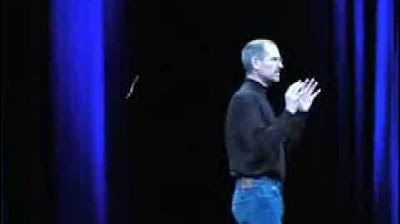Stop Beginning Your Speeches with Good Morning and Thank You and Start with This Instead
Summary
TLDRThis video script emphasizes the importance of making a powerful first impression in presentations. It argues that the first minute is crucial for engaging the audience, establishing credibility, and setting the tone. The script highlights common ineffective opening lines and encourages more dynamic and confident introductions. It offers ten strong opening strategies, such as starting with a personal story, asking thought-provoking questions, or making a bold statement. The goal is to captivate the audience immediately, ensuring that the rest of the presentation flows smoothly and effectively.
Takeaways
- 😀 A presentation is an opportunity to make a strong first impression, either building credibility and engagement or missing the chance entirely.
- 😀 The first minute of your presentation is crucial for capturing your audience's attention and setting the tone for the rest of the talk.
- 😀 Your opening should establish command of the room and show that you're calm and confident, helping the audience relax.
- 😀 Common presentation openers like 'hello' or 'thanks for being here' can signal that your talk might be boring or lack energy.
- 😀 A strong introduction promises that the presentation will be engaging, educational, and possibly even inspiring.
- 😀 Don't just focus on your deck and data—invest time in crafting a powerful, captivating start to your presentation.
- 😀 The first minute sets the tone for your entire presentation, so make it as solid and impactful as the rest of your content.
- 😀 There are several effective ways to start a presentation, such as using personal anecdotes or asking thought-provoking questions.
- 😀 Here are 10 effective opening techniques: start with a personal story, a bold statement, or a question that hooks the audience.
- 😀 Starting with energy and passion helps build engagement from the moment you begin and keeps your audience focused on your message.
Q & A
Why is the first minute of a presentation so important?
-The first minute of a presentation is crucial because it establishes your authority, builds rapport with the audience, and sets the tone for the rest of the presentation. If you fail to capture the audience's attention early, it becomes much harder to engage them later.
What are some common mistakes presenters make in their opening?
-Common mistakes include starting with a greeting or apology, such as 'Hello, thanks for being here' or 'Let me start by apologizing.' These openings tend to create a dull or unorganized impression, which could diminish audience engagement from the start.
What is the ideal outcome of a presentation's opening?
-The ideal outcome is to engage the audience, promise an exciting and informative session, and establish credibility. A strong opening assures the audience that the presentation will be engaging, innovative, and potentially even inspiring.
How can a presenter avoid being too polite in their opening?
-To avoid being overly polite, a presenter should focus on showing passion and confidence from the very first words. This creates a strong impression and conveys authority and enthusiasm rather than apologizing or being excessively deferential.
What role does building rapport play in the opening of a presentation?
-Building rapport in the opening helps establish a connection with the audience. It makes the presenter seem approachable, trustworthy, and relatable, which increases the likelihood that the audience will stay engaged throughout the presentation.
Why should a presenter spend time perfecting their opening?
-The opening is the audience's first impression of the presenter. A well-crafted opening sets the stage for a powerful presentation by building engagement and interest, while a weak opening can result in lost momentum and attention.
What can a presenter promise in their opening to captivate the audience?
-A presenter can promise that the presentation will be engaging, educational, innovative, and potentially inspiring. This promise immediately generates curiosity and sets the expectation that the presentation will be valuable.
What is the significance of a presentation's first impression?
-The first impression is critical because it shapes how the audience perceives the entire presentation. A strong start helps establish credibility, sets expectations, and builds the necessary momentum to keep the audience interested.
What are some of the recommended opening lines for a presentation?
-Some recommended opening lines include: 'When I showed up for my first day of work here, I mistakenly thought that...', 'The year was...', 'What would you do if you'd been in my shoes? So here's what happened...', and 'I have a confession to make.' These openers engage the audience and set an intriguing tone.
How does a powerful opening impact the rest of a presentation?
-A powerful opening creates momentum that carries throughout the presentation. It establishes the presenter's credibility and builds a connection with the audience, making it easier to engage them in the content and keep their attention until the end.
Outlines

This section is available to paid users only. Please upgrade to access this part.
Upgrade NowMindmap

This section is available to paid users only. Please upgrade to access this part.
Upgrade NowKeywords

This section is available to paid users only. Please upgrade to access this part.
Upgrade NowHighlights

This section is available to paid users only. Please upgrade to access this part.
Upgrade NowTranscripts

This section is available to paid users only. Please upgrade to access this part.
Upgrade NowBrowse More Related Video
5.0 / 5 (0 votes)





